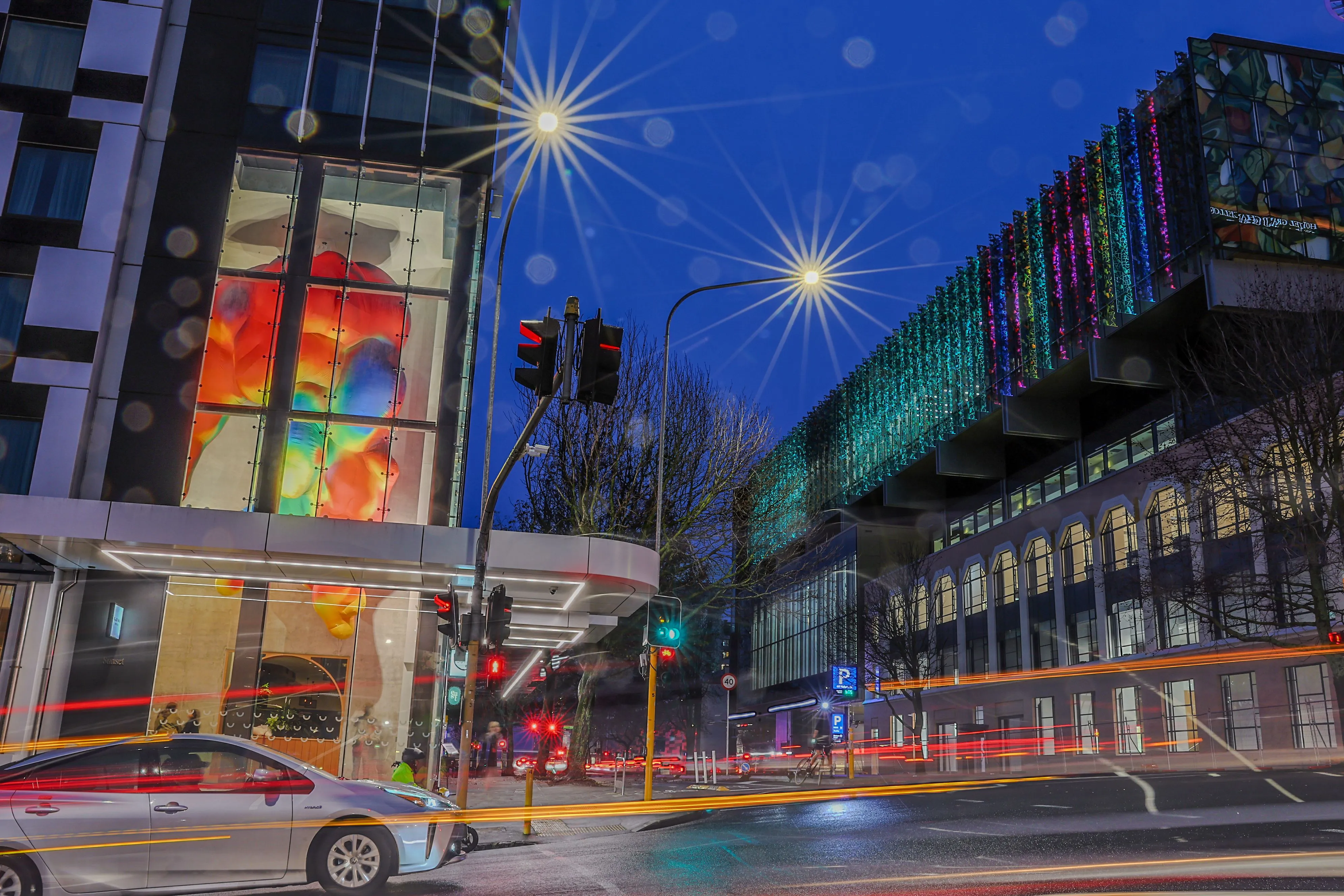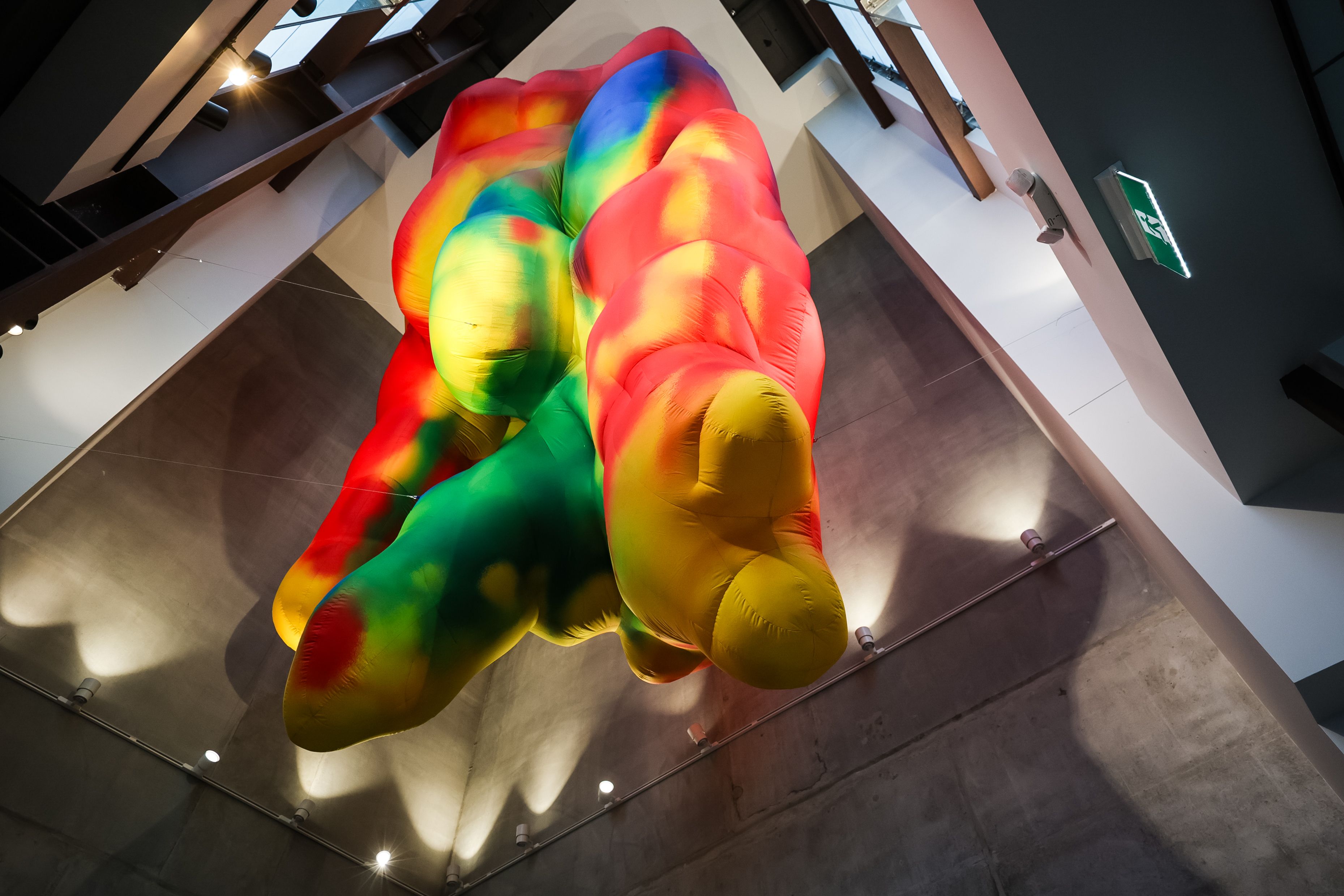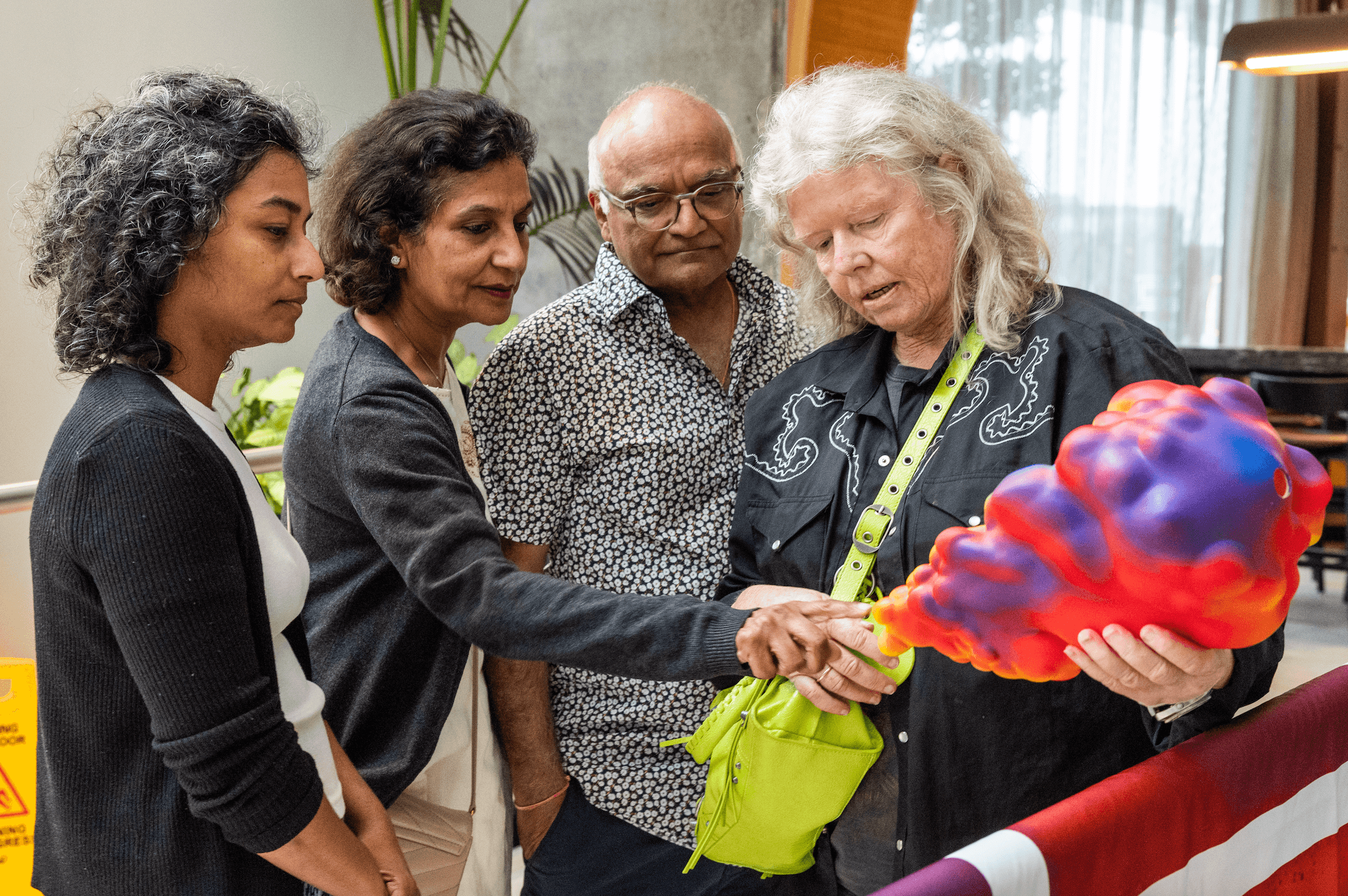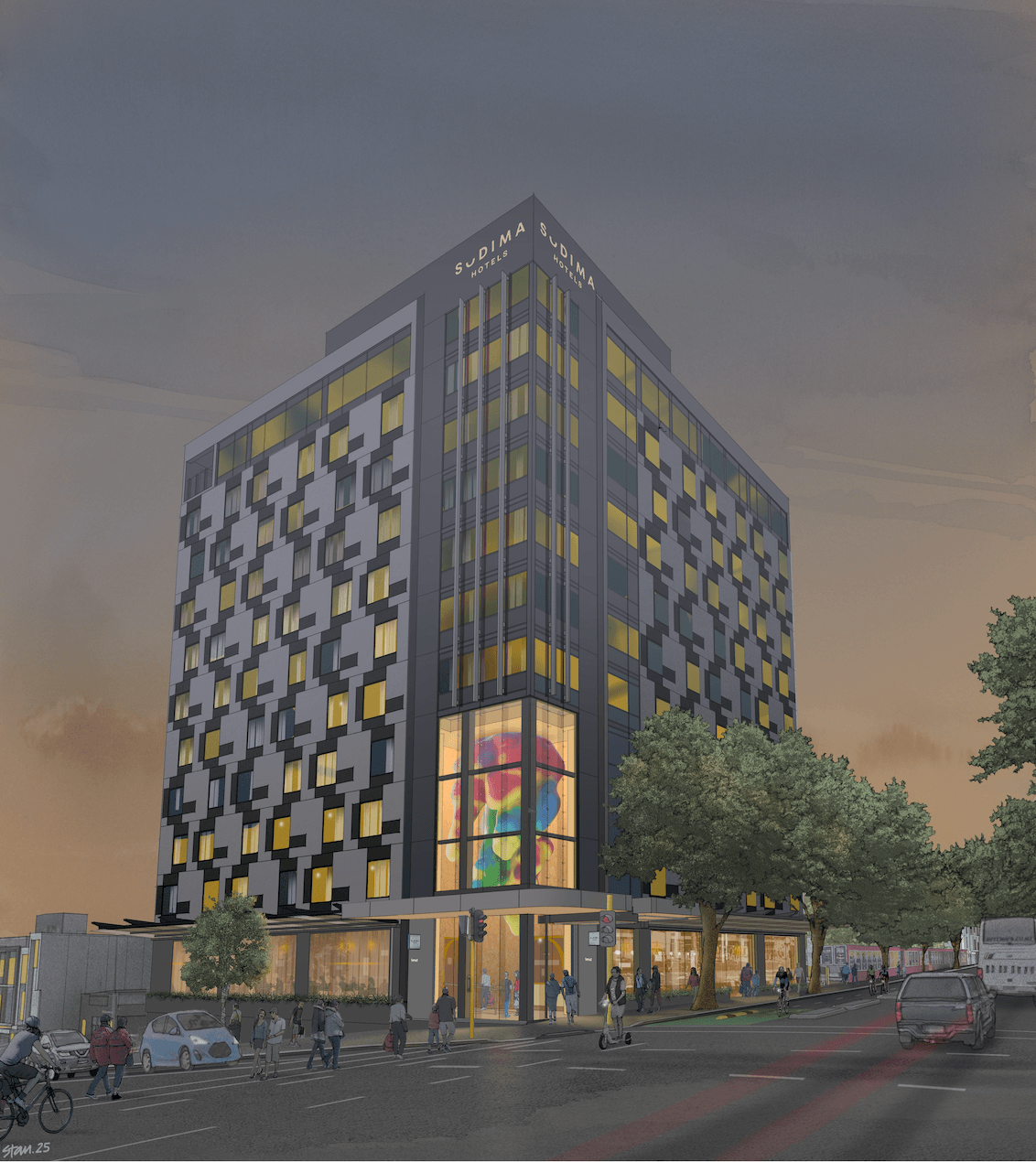Into The Ether - Mixing Public Art and Corporate Finance
Highly regarded artist Judy Darragh's latest awe-inspiring artwork is more than a visual feast, it's a case study in finding the sweet spot on large-scale commissioned works.

In the ever-evolving landscape of contemporary public art in Aotearoa, one of the most fraught issues is who will pay for it.
Aotearoa does not have a particularly well-developed culture of private or corporate patronage, and large-scale interventions in the natural or built environment require deep pockets.
Minister for Arts, Culture and Heritage, Paul Goldsmith, has made several public statements that touch on the role of private and corporate sponsorship in New Zealand’s arts sector, particularly in the context of the government’s broader creative strategy.
For example, in his April 2024 opinion piece “It’s Time For An Arts & Creative Sector Strategy”, the Minister emphasised as one of the four “pillars” of the government’s policy was to spend government money wisely so that it leverages further input from philanthropy and commerce. He also acknowledged that the government’s $500 million investment in the arts should be used strategically to attract additional resources from corporate sponsorship and philanthropy, thereby expanding the sector’s capacity.
This is part of a broader policy of doubling the arts sector’s contribution to New Zealand’s GDP and export revenue within seven years but also signals a scaling back of state sponsorship of the arts. This can already be seen in Creative New Zealand’s tightening budget, the Crown Entity that has for many decades been a funder of large public art projects. In New Zealand, public art funding is often a hybrid model involving local councils, Creative New Zealand, philanthropic trusts, and increasingly, corporate sponsors.
Creative NZ's new CEO Gretchen La Roche explained this situation in her recent The Big Idea interview.
In the draft Amplify: A Creative and Cultural Strategy for New Zealand - released by the government under Goldsmith’s leadership - the leveraging of public investment to attract private capital is promoted.
Globally, corporate sponsorship has evolved from elite patronage to strategic partnership. Such sponsorship of public and semi-public art can play an important role in community engagement and allows company brands to associate themselves with creative excellence.
If the art is located in publicly accessible areas of company locations, it has the added benefit of improving the aesthetics of an operation and increased visibility.

On Thursday (10 July), a major new artwork by renowned New Zealand artist Judy Darragh was installed in the foyer of the Auckland City Sudima Hotel. Commissioned by Sudima Hotels, the sculpture Ether is prominently visible from the street at the intersection of Nelson and Wellesley Streets in the Auckland CBD.
It is an impressive confection, 11 metres in length, and as a permanent addition to the 4.5 star hotel, strikingly redefines the built environment in the area. Ether takes its inspiration from its location. The hotel sits on the Nelson Street ridge, and Sunset - its rooftop bar - takes in dramatic views west over the Waitematā Harbour to the Waitakere Ranges. The sculpture’s form and vividly fluorescent palette evoke the sun setting behind clouds.
Darragh ONZM needs little introduction. A doyenne of the Auckland artworld since the days of Teststrip on K Road - and well known for her use of unconventional materials, bold colours, found objects and the reinterpretation of kitsch aesthetics - her works are found in the collections of art galleries around the country. In 2004, Te Papa curated a major retrospective survey of the artist’s work - Judy Darragh: So... you made it? - and her heroically scaled installations have featured in the atrium of Auckland Art Gallery on multiple occasions.
From the point of view of an Auckland venue, Darragh is the perfect choice – an Auckland icon whose generous and upbeat art captures the democratic spirit and ebullience of the City of Sails.
“I wanted to reference this lightshow in the work Ether,” explains Darragh, “filling the atrium with a riot of hot reds, yellows, and blues. It’s an attempt to capture and contain the fleeting moments of a sunset. Sudima Hotel’s atrium entrance sits on a corner and is visible up and down the streets, at night Ether will light up like a beacon in the city.”
The visibility is important. Yes, this amazing sculpture is within a luxurious hotel, but it is also visible from the street where passers-by can appreciate it - and the area is publicly accessible, allowing it to fulfil the role of a public work, in dramatic contrast to the hotel’s black and white exterior.
Of course, such a project, particularly one as bold and ambitious as Ether, depends on the right sort of private sector supporter. In this example, Sudima Hotels has an established history of supporting and displaying art, which is part of their corporate commitment to the creative community and creating an aesthetically stimulating experience for guests. In November 2022, they hosted an exhibition of Auckland artist Heather Straka’s suite of works Age of Discovery. The local focus is important to the company.
“We are proud of this partnership and are really looking forward to seeing people’s responses to the artwork. We want to support local talent wherever possible,” says Sudesh Jhunjhnuwala, Founder and CEO of Sudima Hotels.

“We incorporated art into this hotel’s design. The atrium space was designed for an extraordinary piece of art, and we have been waiting for the right artist to partner with. Judy Darragh is a significant artist, and Ether plays wonderfully with colour, light and our elevated location.”
Another factor that makes the site so interesting is that this particular intersection is already something of a public art precinct.
Ether joins three other major public artworks in the neighbourhood. Turner Prize-winning UK artist Martin Creed’s Work No. 2950: WHATEVER is nearby at the City Works Depot, New Zealand artist Sara Hughes’ enormous artwork on the glass façade of the New Zealand International Convention Centre, inspired by her childhood in rural Northland - near the Waipoua Kauri Forest - and the largest integrated public artwork in the country. The Hughes work has recently been joined by another huge work in terracotta tiles by Peata Larkin.
Of course, projects of this scale require specialist planning, and to achieve Ether, Darragh and Sudima Hotels collaborated with two public art specialist companies, New Zealand-based Deborah McCormick Consulting (DMC) and Australia-based Urban Art Projects (UAP).
McCormick was the founding director of SCAPE Public Art in Christchurch but left in 2022 to establish her own consultancy. UAP is a global company with offices in the US, China and Saudi Arabia, that for thirty years has specialised in public art and architectural design.
“Businesses like Sudima,” says McCormick, “who invest in great public art within their hotels and developments reap the benefits. An iconic work like Judy Darragh’s Ether provides a permanent accessible cultural boost for the precinct.
"Contributing to the differentiation of places; public art showcases and defines what is special about a place, city or region. They attract visitation, partnerships and investment, contributing to the success and viability of the local economic landscape.”

McCormick highlights the importance of this kind of hybrid approach to the future of public art, both in Aotearoa and internationally.
"City planners, governments, and developers around the world have long recognised the importance of public. An expression of creativity in the public realm, public art shapes the identity of our civic places by creating distinctive and iconic visual elements that are intrinsic to the urban realm and how we experience public space.”
In the ever-evolving landscape of contemporary art, the symbiotic relationship between corporate entities and public art projects has become a beacon of innovation and cultural enrichment.
This dynamic interplay not only fosters artistic expression but also bridges the gap between commerce and creativity with communal engagement. It is a way for corporate entities to demonstrate a willingness to participate in a community on more than just a transactional level.
This becomes particularly important in a climate when it is becoming increasingly uncertain to what extent public art funding at the government level may remain available. Meanwhile, the people of Auckland get another fantastic artwork to marvel at.